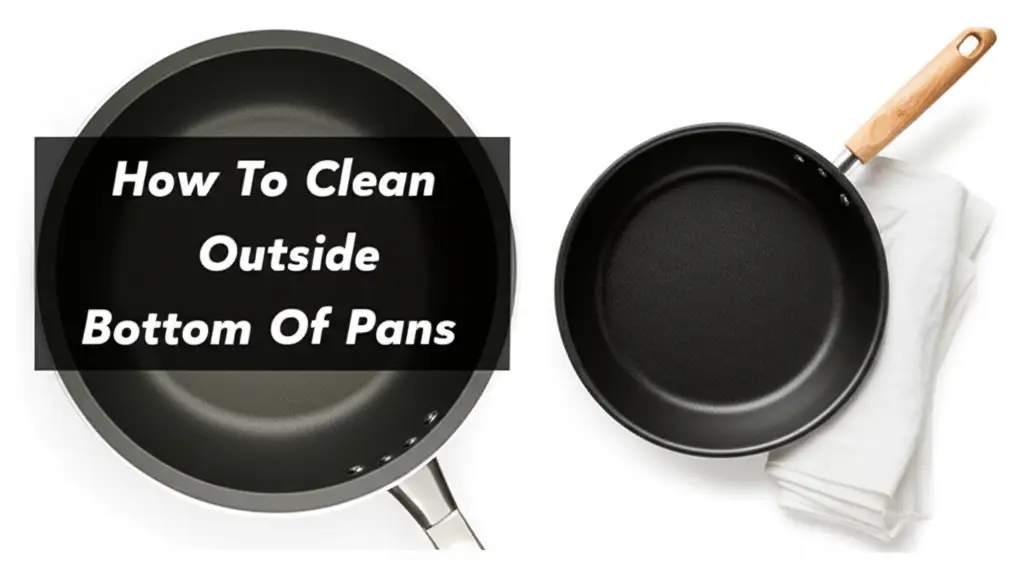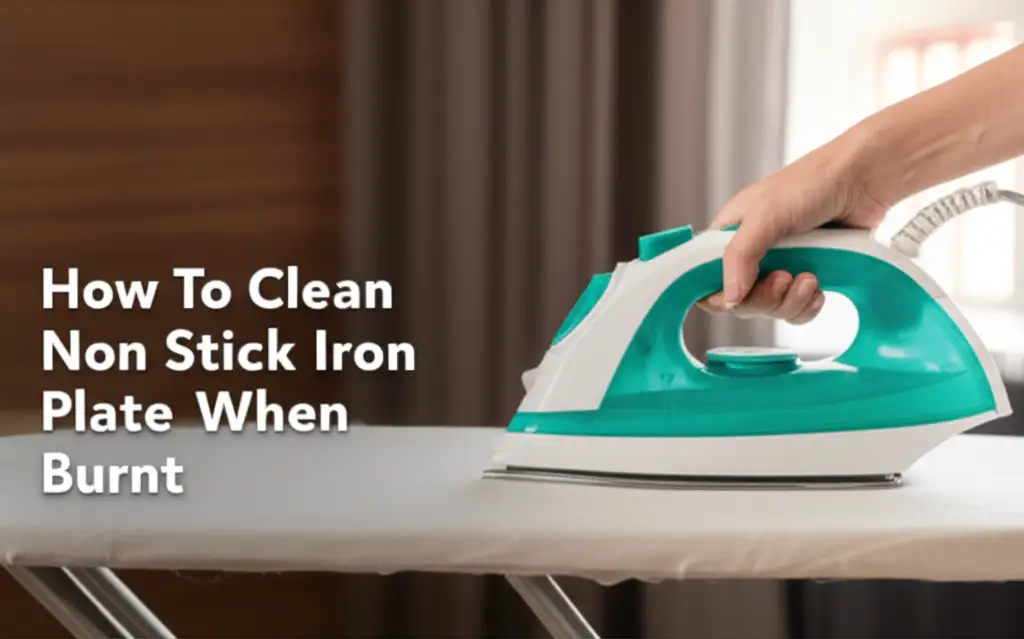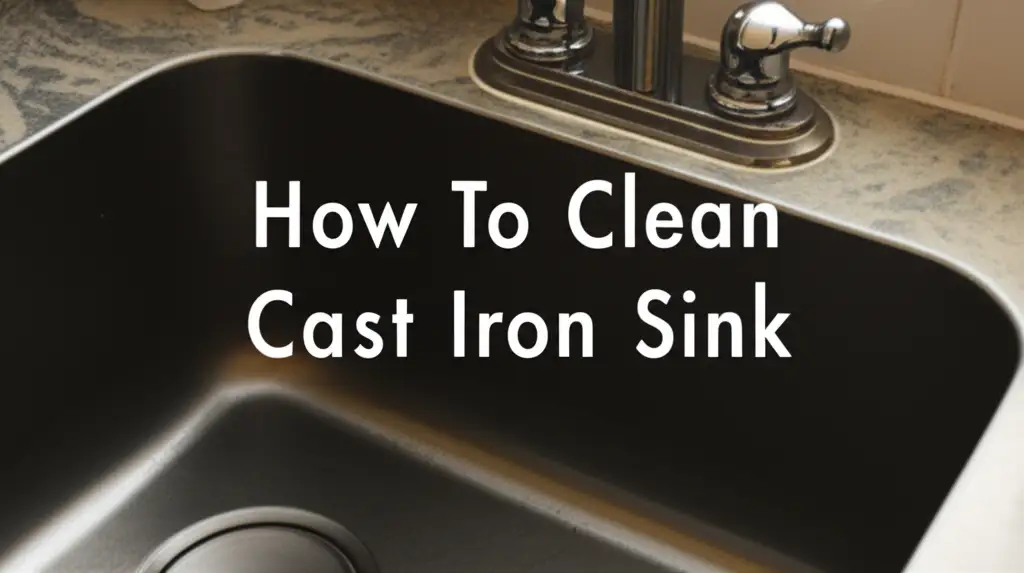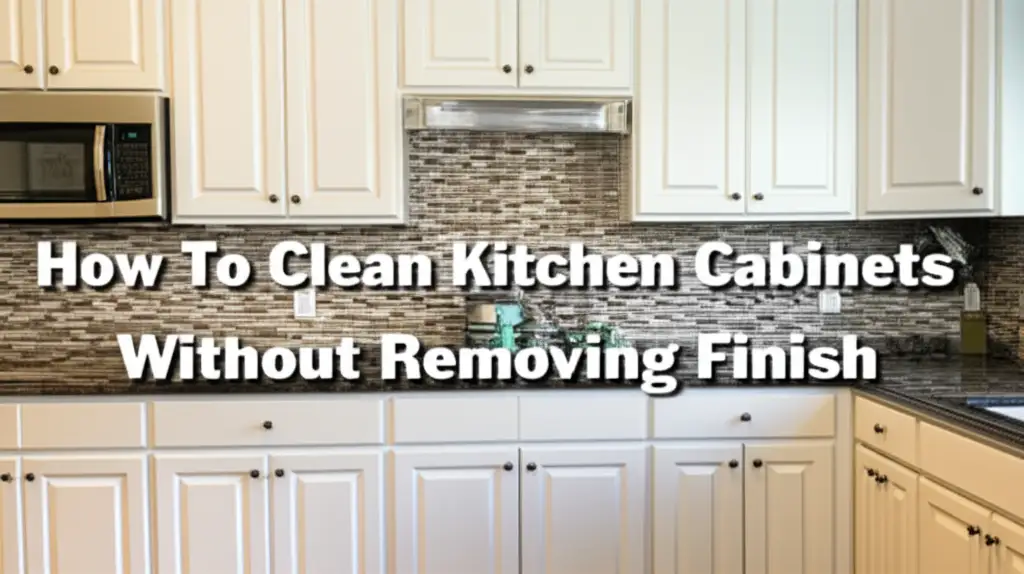· Kitchen Maintenance · 13 min read
How To Clean Outside Bottom Of Pans

How To Clean Outside Bottom Of Pans: Restore Shine & Efficiency
Have you ever looked at the bottom of your favorite frying pan and winced? That sticky, dark layer of burnt grease and grime builds up over time. It makes even the most beautiful cookware look neglected. Cleaning the outside bottom of pans can seem like a daunting task. However, it is an essential step for maintaining kitchen hygiene and extending the life of your cookware. I know the frustration of scrubbing endlessly. This guide will show you simple, effective ways to restore your pans. We will cover various materials and cleaning methods.
Takeaway
- Identify your pan’s material before cleaning.
- Use baking soda, vinegar, or Bar Keepers Friend for most pan bottoms.
- Apply gentle abrasives and scrubbing for burnt-on residue.
- Rinse thoroughly and dry pans completely to prevent new buildup.
Cleaning the outside bottom of pans involves removing accumulated grease and carbon. You can achieve this using common household items like baking soda, vinegar, and dish soap. Specialized cleaners or gentle abrasives like Bar Keepers Friend also work well. Select your method based on the pan material for best results.
Why Pan Bottoms Get Dirty: Carbon Buildup and Grease
The outside bottom of pans faces a constant battle. High heat and food splatters cause stubborn layers to form. This buildup is often a mix of carbonized food bits and polymerized grease. These layers stick tightly to the metal surface. This dark accumulation not only looks bad but also affects cooking efficiency.
Heat transfer becomes uneven when the bottom is coated. This means your food might not cook properly. Gas flames or electric burners heat the pan. The grime acts as an insulator. This makes the pan take longer to heat up. It also wastes energy. Regularly cleaning the outside bottom of pans improves cooking performance. It also helps your kitchen look much tidier. Ignoring this buildup makes cleaning harder later on. Fresh grease becomes burnt-on grease very quickly. You want to avoid that.
Over time, this burnt-on residue can become incredibly tough. It resists regular dish soap and sponges. Different pan materials react differently to this buildup. Stainless steel might show dark spots. Cast iron can develop a very thick, crusty layer. Non-stick pans can lose their outer coating. Knowing the cause helps us choose the right cleaning strategy. Removing these layers brings pans closer to their original state. It also ensures consistent heat distribution for better cooking results.
Essential Cleaning Supplies for Pan Bottoms
Gathering the right tools makes cleaning much easier. You do not need fancy equipment. Many effective cleaners are already in your kitchen pantry. Having these items ready saves time. It also ensures you can tackle any type of grime. I always keep these on hand for tough pan bottoms.
First, you need a good degreaser. Dish soap is a basic necessity. For stronger grease, consider a heavy-duty degreasing spray. Second, abrasive cleaners are key for stubborn stains. Baking soda is a classic choice. Its mild abrasive quality helps lift grime. Cream of tartar is another excellent option, especially for stainless steel. Bar Keepers Friend is a popular cleaner for many types of cookware. It uses oxalic acid to break down stains.
You will also need various scrubbing tools. A non-scratch scrubber or sponge works for light grime. For tough, baked-on residue, a stiff brush or an old toothbrush is useful. Steel wool or copper scrubbers can be effective but use them with caution. They can scratch some surfaces. Always wear rubber gloves to protect your hands. Warm water is essential for soaking and rinsing. A clean towel for drying finishes the job. Having these supplies prepared makes the process more efficient. It also helps you achieve better results on dirty pan bottoms.
- Degreasers: Dish soap, heavy-duty degreasing spray
- Abrasive Cleaners:
- Baking soda
- Cream of tartar
- Bar Keepers Friend (liquid or powder)
- Scrubbing Tools:
- Non-scratch scrubber or sponge
- Stiff brush or old toothbrush
- Steel wool or copper scrubber (use with care)
- Protective Gear: Rubber gloves
- Other: Warm water, clean towels
Cleaning Stainless Steel Pan Bottoms
Stainless steel pans are durable but can show burnt-on stains easily. Restoring their shine requires specific steps. My stainless steel pans always look better after this method. It brings back that factory gleam.
Start by making a paste with baking soda and a little water. You want it thick enough to spread. Apply this paste generously to the entire outside bottom of the pan. Pay extra attention to dark, crusty areas. Let the paste sit for at least 15-30 minutes. For very stubborn stains, let it sit for a few hours or even overnight. This gives the baking soda time to break down the grime. You can learn more about how baking soda cleans stainless steel pans.
After soaking, use a non-scratch scrubber or a stiff brush. Scrub the pan bottom in circular motions. The paste will combine with the grime. It will lift off the burnt-on layers. Rinse the pan with warm water. Repeat the process if some stains remain. For extremely tough stains, consider using Bar Keepers Friend. Sprinkle the powder onto the wet pan bottom. Scrub gently with a damp sponge. This powerful cleaner makes quick work of dark marks. Remember to always rinse stainless steel thoroughly. Dry it immediately to prevent water spots. This method helps clean burnt stainless steel pans effectively.
Tackling Burnt Grease on Non-Stick & Aluminum Pans
Non-stick and aluminum pans need gentler care. Harsh abrasives can damage their surfaces. Burnt grease on these pans still requires effective cleaning. I once ruined a non-stick pan by being too aggressive. Learn from my mistake.
For non-stick pans, avoid steel wool or abrasive powders. These can scratch the delicate coating. Instead, create a solution of warm water and dish soap. Add a few tablespoons of baking soda to the water. Submerge the pan bottom in this solution. Let it soak for at least an hour, or preferably overnight. The baking soda and soap will loosen the burnt grease.
After soaking, gently scrub the pan bottom with a soft sponge or nylon brush. The grime should wipe away more easily. For any remaining stubborn spots, make a paste of baking soda and a tiny bit of water. Apply it to the spot and let it sit for a few minutes. Then, gently rub it off with a soft cloth. Aluminum pans are similar. They can also discolor with certain cleaners. Avoid harsh alkaline cleaners on aluminum. Vinegar and baking soda are safe choices. This approach protects the pan’s finish. It effectively removes unwanted residues. It also keeps your non-stick cookware performing well.
Restoring Cast Iron and Copper Pan Bottoms
Cast iron and copper pans are beloved for their cooking properties. However, their bottoms also collect grime. Each material needs a specific cleaning approach. You want to preserve their unique characteristics.
Cleaning Cast Iron Pan Bottoms
Cast iron is known for its durability and seasoning. Cleaning the outside bottom of cast iron pans means being careful not to strip the seasoning. For tough, baked-on grime, mix coarse salt with a little oil to create a paste. Apply this paste to the dirty areas. Use a stiff brush or a plastic scraper to scrub the grime away. The salt acts as a gentle abrasive. You can also use a potato half dipped in salt.
Alternatively, some people use steel wool for very heavy carbon buildup. If you choose this, know you will need to re-season the pan afterward. After scrubbing, rinse the pan quickly. Dry it immediately. Then, apply a thin layer of cooking oil. Bake it in the oven to re-season. This prevents rust and maintains its non-stick properties. Always remember that cast iron needs drying and oiling after cleaning.
Cleaning Copper Pan Bottoms
Copper pans are beautiful but tarnish easily. Their bottoms can accumulate dark, burnt stains. For these, a classic solution is lemon and salt. Cut a lemon in half. Dip the cut side into coarse salt. Rub this directly onto the stained areas of the copper bottom. The acid from the lemon and the abrasive salt work together to lift the grime and tarnish. You will see the copper shine through.
Another effective method for copper is using white vinegar and baking soda. Make a paste with these two ingredients. Apply it to the pan bottom. Let it sit for a few minutes. Then, gently scrub with a soft cloth or sponge. Rinse thoroughly with warm water. Polish with a soft, dry cloth to restore the brilliant shine. This method is effective for cleaning burnt grease from frying pan bottoms while protecting the metal.
Preventative Measures for Clean Pan Bottoms
Keeping pan bottoms clean is easier than extensive scrubbing. A little prevention goes a long way. I learned this the hard way after many hours of scraping. These habits will save you effort.
First, wipe down the pan bottom after each use. Even a quick swipe with a damp cloth can remove fresh splatters. This prevents them from baking on later. Second, avoid overheating your pans. Excessive heat can carbonize oils and food particles faster. Use medium heat whenever possible. This helps cook food evenly and minimizes residue on the outside.
Third, ensure your stovetop is clean. Spills on the burner can transfer to the pan bottom. Wipe up any immediate spills on the stove. This prevents new grime from forming on the pan. Fourth, use proper oil amounts. Too much oil can splatter and burn onto the pan exterior. Use just enough for cooking. If cooking with oily foods, cover the pan with a splatter guard. This keeps grease inside the pan. Following these simple steps will significantly reduce buildup. Your pans will stay cleaner longer. This means less scrubbing for you.
Advanced Methods for Stubborn Pan Stains
Sometimes, standard methods are not enough. Extremely stubborn stains require more potent solutions. These techniques are for those really tough, baked-on residues. I pull out these methods when nothing else works.
Using Oven Cleaner
For very heavy carbon buildup on stainless steel or cast iron (not aluminum or non-stick!), oven cleaner can be effective. This is a powerful chemical. Always use it in a well-ventilated area. Wear heavy-duty gloves and eye protection. Spray the oven cleaner onto the dry pan bottom. Let it sit for the time recommended on the product label, usually 30 minutes to a few hours. The chemicals will dissolve the burnt grease.
After the waiting period, use a plastic scraper or stiff brush to remove the softened grime. Rinse the pan thoroughly under hot water. You might need to scrub with dish soap to remove all chemical residue. Ensure the pan is completely free of cleaner before using it for cooking. This method is similar to how you would clean baked on grease from pans.
Cream of Tartar for Discoloration
Cream of tartar is excellent for removing discoloration and some stains, especially on stainless steel or copper. Make a paste using cream of tartar and a few drops of hydrogen peroxide or lemon juice. Apply this paste to the affected areas. Let it sit for 10-15 minutes. The mild acid in cream of tartar helps lift stains without scratching.
Scrub gently with a non-abrasive sponge. Rinse thoroughly. This method is less harsh than oven cleaner. It works well for general darkening or light burnt marks. It is also safe for many metal types. Consider this a good intermediate step before harsher chemicals. You can also combine cream of tartar with baking soda for extra cleaning power, as seen in methods to clean with vinegar and baking soda.
Power Washing (Caution Advised)
Some people might consider power washing for extremely dirty pan bottoms, but this is generally not recommended. A pressure washer is for much larger outdoor surfaces like cleaning outside of a house without a pressure washer or cleaning outside of a black grill. A pan is small and fragile. High-pressure water can damage delicate cookware finishes. It can warp thinner metal pans. The spray can also spread dirty water widely. If you choose this, use the lowest pressure setting. Hold the nozzle far away. This method is usually overkill. It carries more risks than benefits for cookware. Stick to manual scrubbing and chemical aids for safer, more effective results.
FAQ Section
Q1: Can I use dishwashing detergent to clean the outside bottom of my pans?
Yes, dishwashing detergent works for light grease and daily maintenance. For baked-on grime, you will need something stronger. Combine it with baking soda or let the pan soak in a warm detergent solution for hours. This helps loosen tougher residues.
Q2: How often should I clean the outside bottom of my pans?
Clean the outside bottom of your pans as needed. If you notice buildup, clean it right away. Small amounts are easier to remove. Regular wiping after each use prevents heavy accumulation. Aim for a thorough cleaning every few weeks or months.
Q3: Will cleaning the outside bottom of pans affect their non-stick properties?
No, cleaning the outside bottom does not affect the inside non-stick coating. Be careful not to use abrasive scrubbers or harsh chemicals on the pan’s interior. When cleaning the exterior, protect the non-stick surface from accidental contact with strong cleaners or harsh tools.
Q4: Is it safe to use oven cleaner on all types of pan bottoms?
No, oven cleaner is not safe for all pan types. It is suitable for stainless steel and cast iron. Avoid using it on aluminum, non-stick, or anodized pans. The strong chemicals can cause discoloration or damage delicate finishes. Always test in an inconspicuous area first.
Q5: Can I put my pans in the dishwasher to clean the bottom?
Dishwashers are not effective for baked-on grease on pan bottoms. The high heat can set stains further. Dishwasher detergents are too mild for tough carbon buildup. Hand washing with specific cleaners is always best for pan bottoms.
Q6: What causes pans to have a rainbow-like stain on the bottom?
Rainbow stains, or heat tint, occur from overheating stainless steel. Minerals in water or certain foods can also cause them. You can remove these stains. Use a paste of cream of tartar and water, or a specialized stainless steel cleaner. Gently scrub the area until the discoloration fades.
Conclusion
Keeping the outside bottom of pans clean is more than just aesthetics. It affects how your food cooks. It also extends the life of your valuable cookware. We explored different methods today. We covered everything from simple baking soda solutions to stronger remedies for stubborn stains. The key is to match the cleaning method to your pan’s material. Always prioritize safety and pan integrity.
By regularly cleaning the outside bottom of pans, you maintain their efficiency and appearance. You prevent burnt-on layers from becoming permanent fixtures. Implement preventative measures like wiping down pans after each use. This will reduce the need for deep cleaning. Your kitchen will look cleaner. Your cooking will be more consistent. Take pride in your sparkling cookware. Start today and bring new life to your old favorites. Your pans, and your meals, will thank you.
- pan cleaning
- burnt grease
- cookware care
- kitchen hacks
- stainless steel
- cast iron
- copper pans




